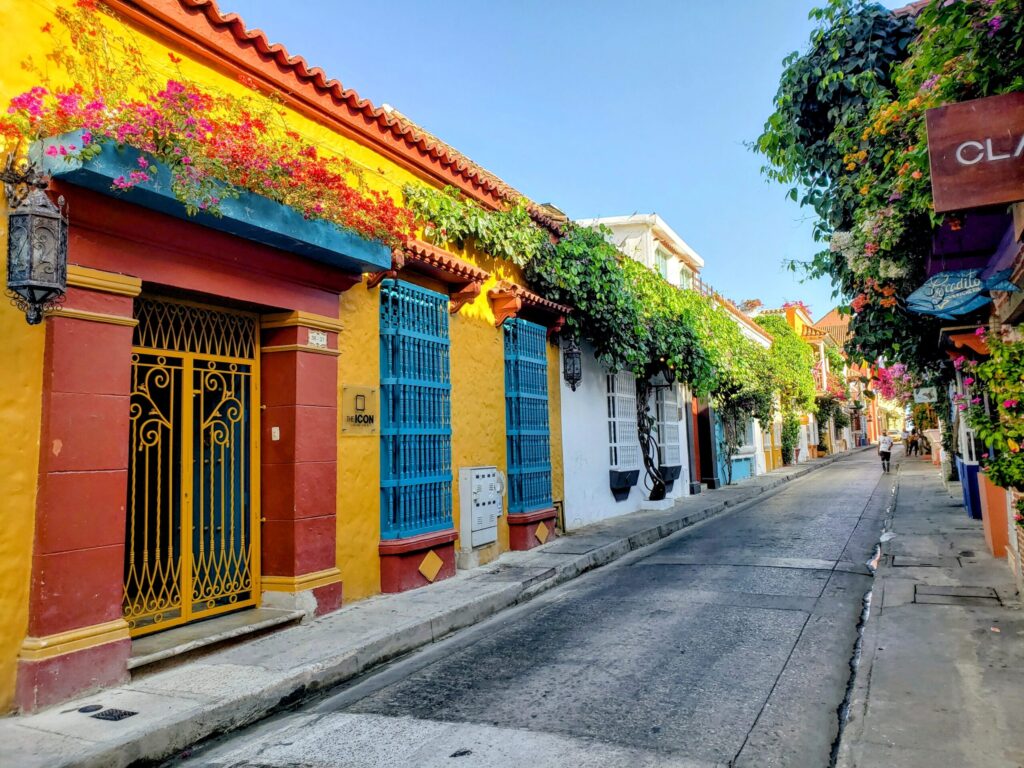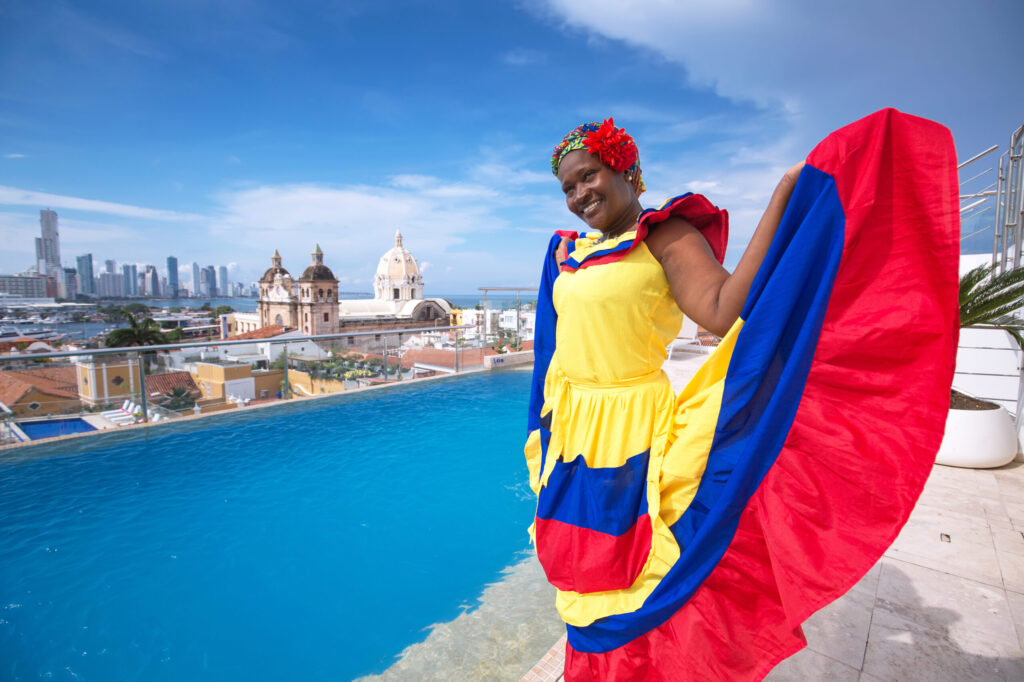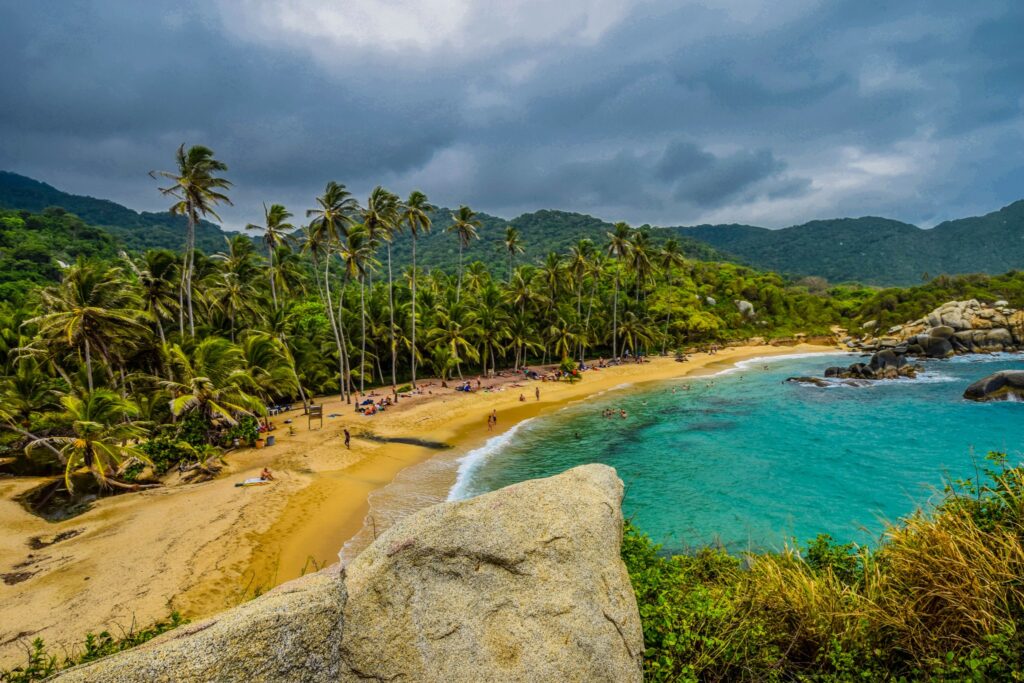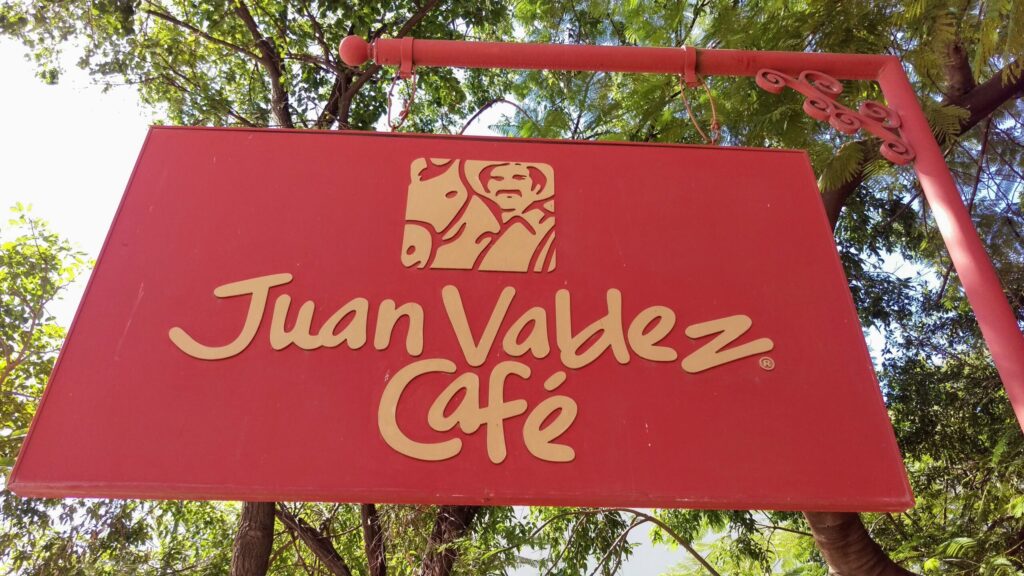
Colombia’s Caribbean Coast – A Delight for the Senses
Chris Campbell has traveled to Colombia’s sun-soaked Caribbean Coast and offers ways you can explore the region using your five senses.
If you’re an avid Netflix watcher, at some point, you may have binge-watched the gripping dramatic series, Narcos, a raw depiction of Pablo Escobar, the ruthless drug cartel leader from Medellin, who brought Colombia to its knees in the late 1980s. While the writers took some creative liberties for entertainment value, similar violent images of bombings, assassinations, and armed attacks in Colombia were commonplace on the evening news during my formative years and surely affected how I viewed this South American nation of 52 million.
Fast forward 30 years, I wanted to see for myself how this proud and welcoming country has changed. Would I feel safe as a gay man? Based on my travels over two visits, I can confirm that Colombia has made a spectacular comeback, turning its tarnished image into a modern and culture-rich destination, where personal safety is no longer top of mind.

With so many bio-diverse and interesting regions to cover, I have chosen to highlight one of Colombia’s most-visited and vibrant regions, the red-hot Caribbean coast – now a popular port of call on cruise itineraries and widely visited by the LGBTQ+ community. Whether you have just a few hours or a more leisurely few days to explore, you’ll find many things to delight the senses in Colombia’s coastal playground.
A perfect starting point to begin exploring the Caribbean coast, whether arriving by air or sea, is Cartagena de Indias (aka Cartagena), a gay-friendly city of 1.2 million, and home to a UNESCO World Heritage site, the famed Walled City. Founded in 1533 by Spanish conquistadors, Cartagena became an important trading center of gold and silver, and, due to its strategic location, became a stopping point along the slave route, which contributed to Cartagena’s present-day rich Afro-Colombian culture. To protect its vast riches from pirates, the Spanish constructed over eight miles of walls (las murallas) and 20 mini forts surrounding the city, where you can now take a stroll, enjoy a cooling breeze, and catch a spectacular sunset while sipping on a Limonada De Coco at Café del Mar.


Wander the cobblestone streets of the walled city and admire the Spanish colonial architecture bursting with color, such as the Catedral Santa Catalina de Alejandria, completed in 1612 with its imposing dome, and the Plaza de Bolivar, the oldest and largest square inside the walls. Take home some delightful Colombian handicrafts, traditional hats, baskets made from natural fibers, or sumptuous pottery (Artesanías de Colombia is my go-to tienda or store for high-quality souvenirs).
Sample the local flavors, a blend of Spanish, African, and indigenous foods such as a hearty sancocho (stew) made with fish, yucca, corn, and cilantro, or sip on a coffee at Ábaco Books and Cafe, where I purchased some reading material by local Nobel-prize winner García Márquez. If rooftop bars are your thing, enjoy a cocktail and tapas at the gay-friendly Townhouse atop the hotel of the same name and soak in the hot tub to top off your visit.

If you’re looking for a Miami vibe, head on over to Bocagrande, a beachside neighborhood with glittering skyscrapers and sandy beaches just a few minutes outside the historic center. While the beaches here are quite urban, you can easily spend a half day working on your tan. Alternatively, book an island-hopping cruise whisking you away to the nearby Rosario Islands or Isla Baru’s Playa Blanca for beaches that easily compete with the best of the Caribbean.
To get a sense of life outside the walled city, explore Barrio Getsemani, a thriving bohemian and gay-friendly neighborhood just 10 minutes from the city center, and check out its vivid street art and graffiti, both powerful and political in nature. End your day snacking on grilled arepas and visiting one of the many brew pubs in this dynamic neighborhood.

Aside from Cartagena, Colombia’s Caribbean coast offers both city and nature destinations, and you can tailor a day trip from Cartagena or an overnight trip depending on your interests. About two hours northeast of Cartagena is coastal Barranquilla, hometown to gay-favorite Shakira and host to Carnaval de Barranquilla each year, starting on the Saturday before Lent. As the second largest carnival in the world – only Rio de Janeiro’s is larger – the festivities include street dances, musical and masquerade parades, complete with dazzling costumes, and traditional pageantry. For the LGBTQ+ community, the Carnaval Gay de Barranquilla is typically held the week before the main event and includes epic parties and concludes with the fabulous Guacherna Gay parade.
From an ecological experience, the Caribbean coast also boasts one of Colombia’s most popular natural parks, Parque Nacional Natural Tayrona, named after the indigenous people of the Sierra Nevada de Santa Marta. A guided tour is recommended for the two-hour trek through the jungle where you may spot howling monkeys, sloths, and the threatened Andean condor. Mosquito repellent is a must! At the end of the trek, you’ll be rewarded with the pristine Playa Cabo San Juan, complete with white sand and a laid-back vibe.

For the nudists out there, check out the nudist beach, Boca del Saco. Most visitors to the park stay in nearby Santa Marta, the oldest city in Colombia (est. 1525) and last home to Simon Bolivar, who liberated Colombia from the Spanish empire in 1819.
With its inclusive and open-minded attitude, there’s no doubt Colombia is a rising LGBTQ+ travel destination. And while its troubled past isn’t entirely behind them, I’m cheering for its continued success and turnaround – viva Colombia!

Looking for more travel inspiration and ideas in Colombia? Consider learning more about OUT Colombia and find out why world travelers rank it as the No. 1 country to visit in South America.




